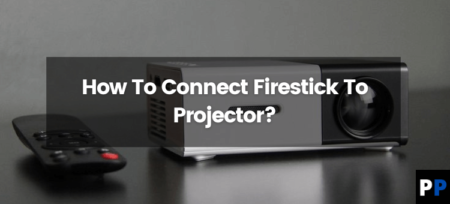A projector can play a major contribution to revolutionizing your experience in the home theater without a doubt. This is accomplished by bringing new dimensions to binge-watching and gaming at a budget-friendly price.
Although the entertainment can be kept, the cleanness is lost if wires protrude from every corner. The setup will appear messy, and you may prefer the wires to be kept from view.
In this post, we’ll help you conceal the wires of your projector by using creative methods that aren’t dependent on the kind of setup or projector you own.
Why Do You Need To Hide Them?
If you’re presenting, wires could distract your audience and you. Since projector wires are typically very long, they’ll always be visible regardless of your presentation.
Before making physical connections or placing cables through ceilings or walls in any project, it’s essential to sketch the layout first. This could cause harm when you’re not aware of the location of the cables.
When routing wires through rooms, be aware that they shouldn’t run in the direction of people or in front of walls, as they could get caught on furniture and other objects.
The greatest ways to conceal projector wiring may be found in this post, so read on!
The Three Methods To Hide Them
There are three very easy methods that you can use to hide projector wires easily.
Use Cord Covers
The cord cover is a basic piece of metal or plastic that is attached to the ceiling or wall. It is possible to purchase one that is in keeping with your decor or paint it the same shade as the wall. If you leave the paint color unpainted, it’s a cleaner appearance than a messy tangle of wires. Using multiple cord covers with labels can aid in keeping all your cords in order. You can locate budget-friendly cord covers here.
Cord covers are inexpensive and simple to put in. The only drawback is that you’ll be able to see them even when they’re the same color as the wall; they’ll disappear completely. They’ll be integrated into your decor; that’s what people usually want when trying to conceal their projector’s wires.
Eliminate The Cords
There’s no need to conceal wires if they’re not present. You can convert your projector wireless simply by purchasing the HDMI dongle and USB. After that, connect the other end to the receiver, gaming system, or another source of content for direct transmission to the projector without cords.
Bluetooth-enabled headphones can also be used to play wireless music. The only cord you can’t change is the power cord. Since it’s usually slim and discrete, you could also cut down the cost by ensuring that you place the projector.
Take Advantage Of Soundproofing Material
Sound is just as important as the visual aspect for an immersive experience in the home theatre. To fully realize the aesthetics, certain rooms must have absorptive materials on the ceiling and walls to channel sounds.
It is possible to install these soundproofing materials in that the cables of a projector are concealed beneath them. It’s not similar to putting up boring egg-crate-style structures. It is easy to pick vibrant curtains, tapestries, and rugs for the walls and ceilings that could be an ideal method of reducing noise without detracting from the look of your TV room.
What’s the bottom line?
It is possible to set up an entertainment system that uses a projector without the hassle of cables and cords. With any luck, you’ve gained a clearer picture of what’s best for your house and your budget after reading this post!
Thank you so much for reading this article, hope you like the article and it may help you in solving your problem. Take care














